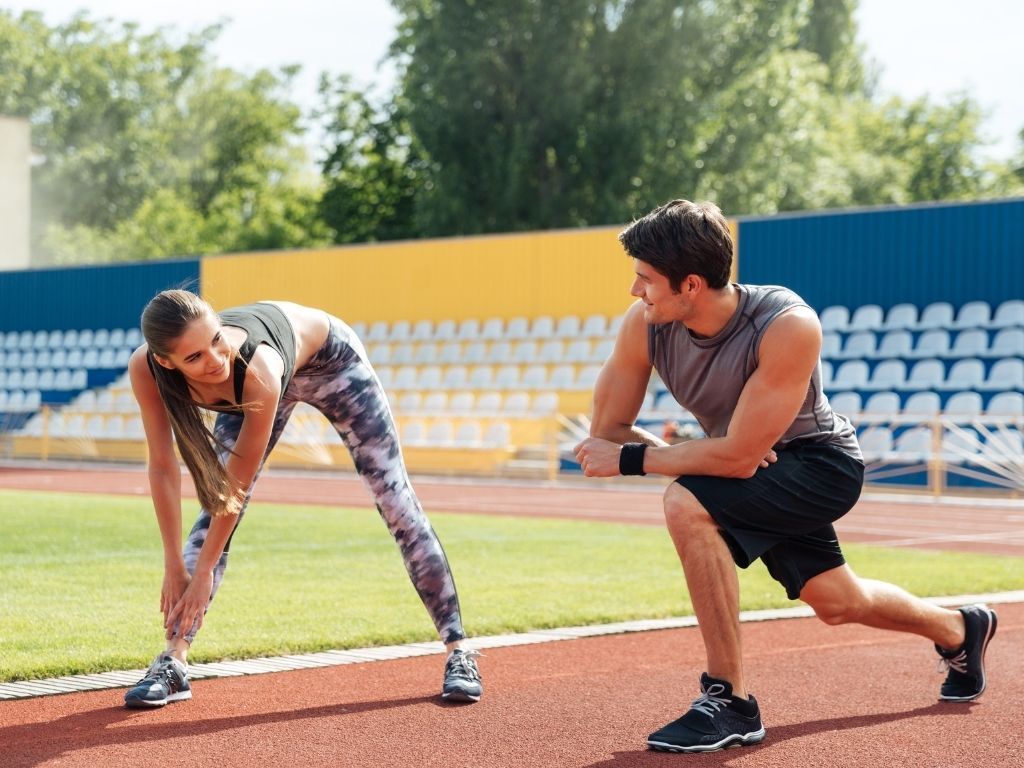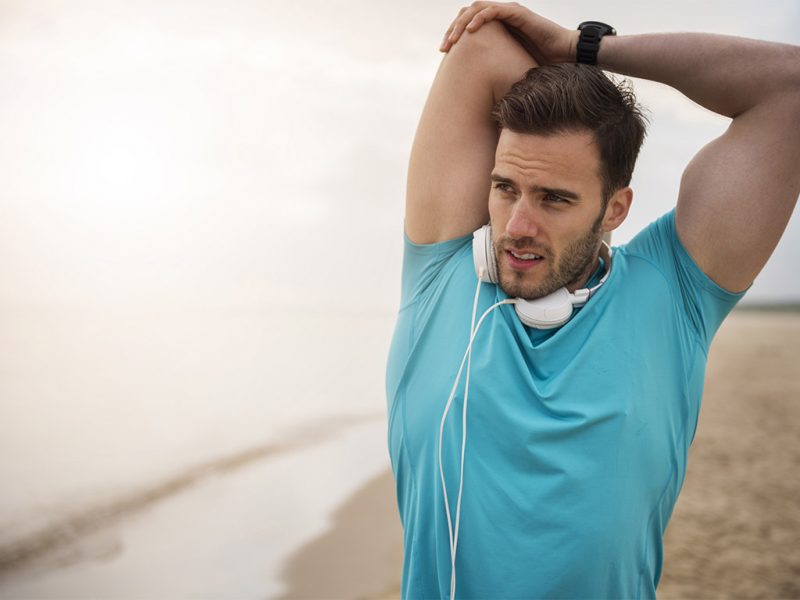Have you ever felt that something wasn’t right during your workout? Were you struggling or lacking energy, did your hands and feet feel like lead? Were you suffering from muscle soreness the next day? Bet you didn’t warm up properly!
If you want to know why warming up is so important, you can find out everything in this article:
- The purpose of warming up
- What happens to your body during warm-up?
- The importance of warm-up
- The 4 types of warm-up
- The basic rules of warm-up
The purpose of warming up
The purpose of warming up before a workout is to prepare the body for increased intensity in physical activity. Full-body exercises help increase circulation in the joints and speed up metabolism. As the temperature of the muscles rises as a result of the exercises (or creams), the oxygen supply also increases. Warming up before a workout is effective when the person grows warmer and starts sweating. At this point, the body begins to cool itself and regulates heat production and heat dissipation during the workout. In addition, the body drives out waste products from the blood by sweating, thus increasing performance.
What happens to your body during warm-up?
- As a result of increased intensity in physical activity, breathing becomes more rapid, more oxygen enters the body and thus blood oxygen levels increase.
- The heart rate elevates, the heart pumps blood into the blood vessels faster, so the oxygen-rich blood reaches the capillaries of the muscles quicker.
- As a result of the increased blood flow, the temperature of the muscles increases, thus the muscle fibers become more flexible, and the risk of muscle injuries, muscle tears, and muscle tension decreases.
- By moving the joints, fluid production in the joint capsules increases, the joints move more easily, thus reducing the risk of cartilage injuries.
In addition, during warm-up, not only do we increase physical activity, but we also prepare for the workout mentally. Without attuning mentally, the effectiveness of the training can be significantly reduced, and a lack of mental preparation can even lead to injuries.
Those who don’t skip warm-up
- There is a smaller risk of injury
- They are more focused
- With increased performance
The importance of warm-up

There are groups that especially benefit from warming up properly. Seniors need to pay attention to warming up before a workout, as their bodies no longer respond as quickly, they are slower to reach the optimal temperature for a full-body exercise. Fitness is also important. The body of novice athletes prepares more slowly for the increased physical activity than of professional athletes.
The build is also a critical factor. The risk of injury is higher with stiff muscles and joints, so you have to make sure to properly warm up your body, and especially your joints. Weather and time of day are also important factors during warm-up. In the cold, circulation is slower, the body warms up more slowly. Also, in the morning, the muscles and joints are even stiffer, so warming up is crucial before a workout.
The 4 types of warm-up:
- general
- special
- active and
- passive warm-up.
The purpose of general warm-up is to work all muscle groups, and with the special warm-up we prepare our body for a specific sport. The general and special warm-ups follow one another. The general warm-up is required for every sport, but during a special warm-up, athletes of different sports do different exercises (e.g., special warm-up exercises are not the same for running, wall climbing, or gym training). active warm-up uses specific exercises, movements. However, the aim of passive warm-up is to raise body temperature and muscle temperature with the help of a hot shower, massage, or warm-up cream.
The basic rules of warm-up:
- Start warming up slowly, avoid sudden movements.
- Gradually increase intensity.
- Pay attention to your breathing.
- Posture is important.

An effective warm-up session improves flexibility and muscle strength, reduces the risk of injury, and increases your need for physical exercise. Also, ligament, nerve, and muscle coordination also improve, which facilitates the proper execution of warm-up exercises. If you don’t warm up before a workout, you force a cold start in your body, starting with a sudden burst of energy, which is very soon followed by a wave of tiredness. Thus, it’s important not to skip warming up, and to have a thorough and effective warm-up session.
After all this, your reward will be a joyful workout session followed by a pleasant feeling of tiredness. And if you don’t forget to stretch after your workout, you can even avoid muscle soreness the next day.

